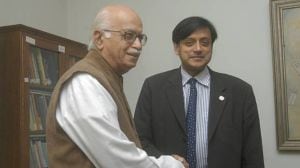Viewers in a fix as popular channels turn to pay
NEW DELHI, SEPT 6: You may not be able to see your favourite programme on the tube any more as popular channels are increasingly becoming...

NEW DELHI, SEPT 6: You may not be able to see your favourite programme on the tube any more as popular channels are increasingly becoming pay’ channels.
While critics flay the concept of pay channels as “discriminatory”, television networks defend it by saying that the viewer must pay for better technology and quality programming. A subscription fee is but the norm around the world.
“The concept of pay channels has both pros and cons,” says Dr N Bhaskar Rao, chairman of the Centre for Media Studies (CMS) — an independent media thinktank here.
“I am not opposed to the idea of having pay channels, but India is not prepared for this at the moment, nor is it desirable,” he says.
“How many households in India would be able to afford a monthly subscription fee to watch television? Can we deny somebody from watching a TV channel of his choice — be it news and current affairs, sports, films or music — only because he cannot afford to pay the subscription fee for that channel? Isn’t it discriminatory?” he asks.
Currently, there are about 13 to 14 pay channels in India, including the latest entrant into the fray — Star News, ESPN-Star Sports, AXN, Zee Cinema, Discovery Channel, National Geographic Channel and Star Movies.
“But the viewer does not have a choice over the channels. He has to pay subscription fee to the cable operator for a particular channel which he does not watch, if the operator airs that channel. The operators bundle together a number of channels for the viewers, who in turn have to pay for all the pay channels in that bundle,” says Rao.
Roop Sharma, president of the Cable Operators Association of India, says in defence, “But that is exactly the problem cable operators are facing in India. More often than not, viewers refuse to pay for the channels which they do not watch. But in any case, the operator has to pay a flat fee to the TV networks for their channels, irrespective of whether the viewer is paying or not.”
“We are not against pay channels. But there has to be some mechanism by which a cable operator would have to pay only for those subscribers who watch that particular channel,” says Sharma.
But some leading pay channels maintain that pay channels are the global norm, and with the progress in technology, India cannot remain immune from it. “In other countries, the subscription fee is much more. In countries in South Asia, the average fee is about Rs 15 to Rs 20 and in the West, it is Rs 30 to Rs 40, whereas in India, we are charging about Rs two to three for each channel,” says R K Singh, managing director of ESPN-Star Sports, two hugely popular pay sports channels in India.
“Having subscription fees for channels is a rational policy. It takes out the monopoly of advertisers. The viewer decides what he wants to see,”says Kiran Karnik, managing director of Discovery Channel.
“It is essential to formulate a policy on pricing of the pay channels to stop exploitation of viewers as well as operators. It is there in every country. Subscribers interests must be the first priority of all broadcasters,” he adds.
“Free-to-air channels breed mediocrity. Look at various Indian channels…how the production quality has improved considerably after they faced competition from the foreign channels,” Karnik says.
Pay or free – ultimately it is the viewer, who has the last word in the matter.



- 01
- 02
- 03
- 04
- 05




























